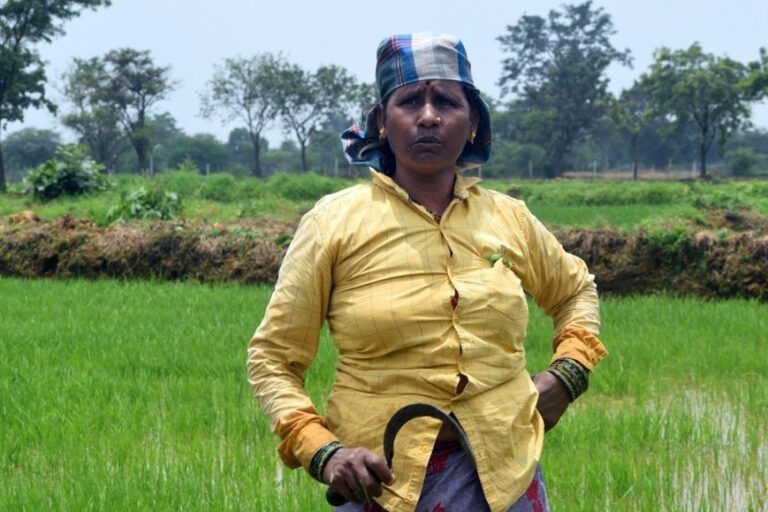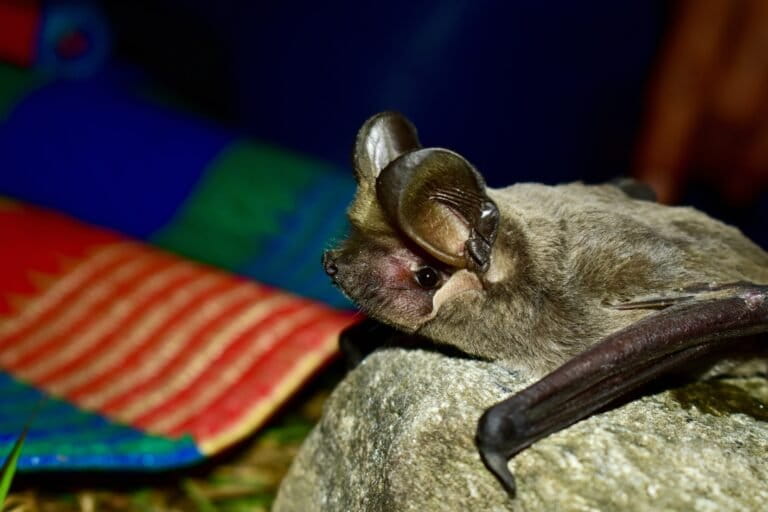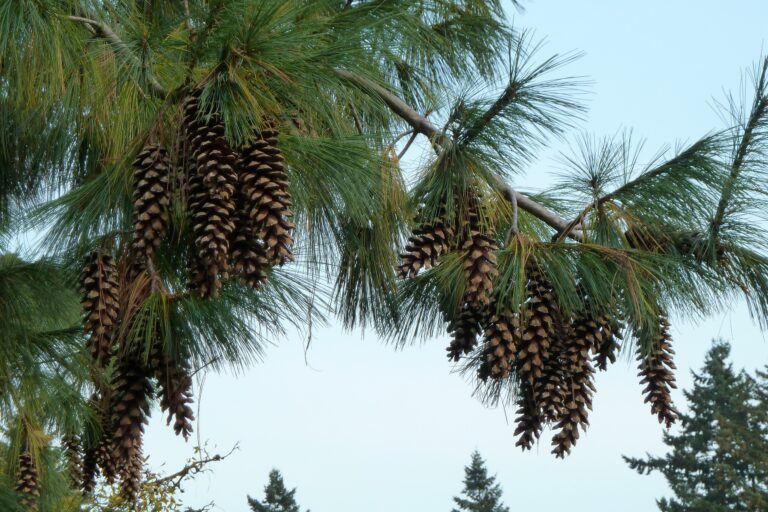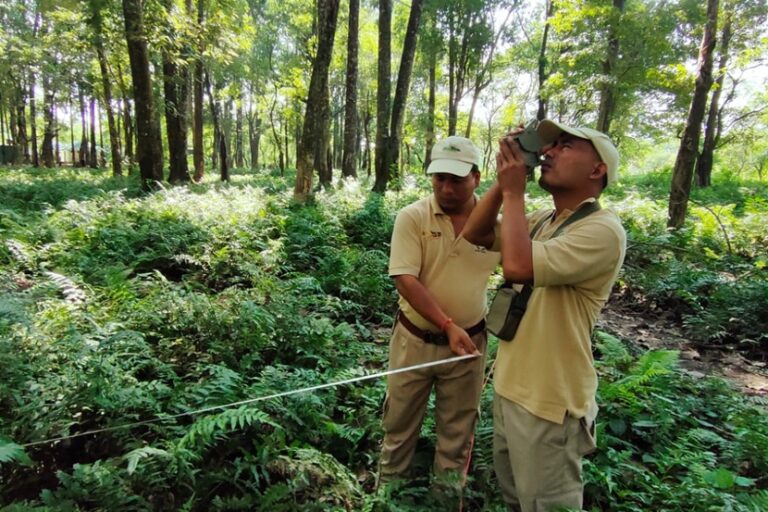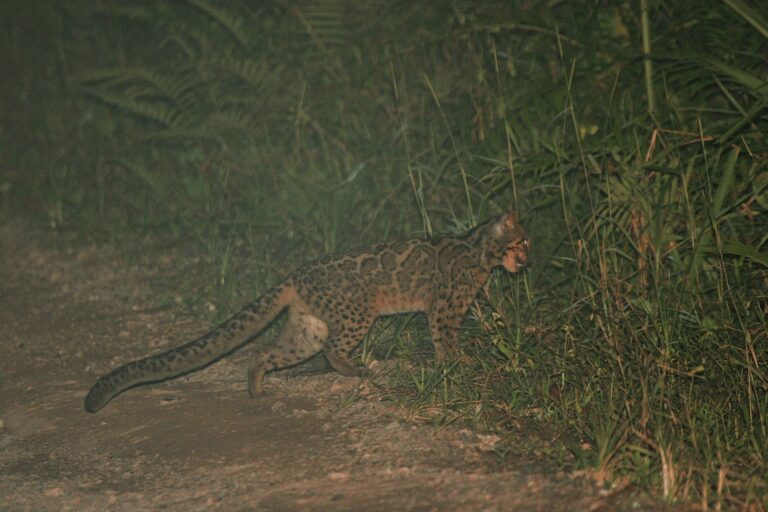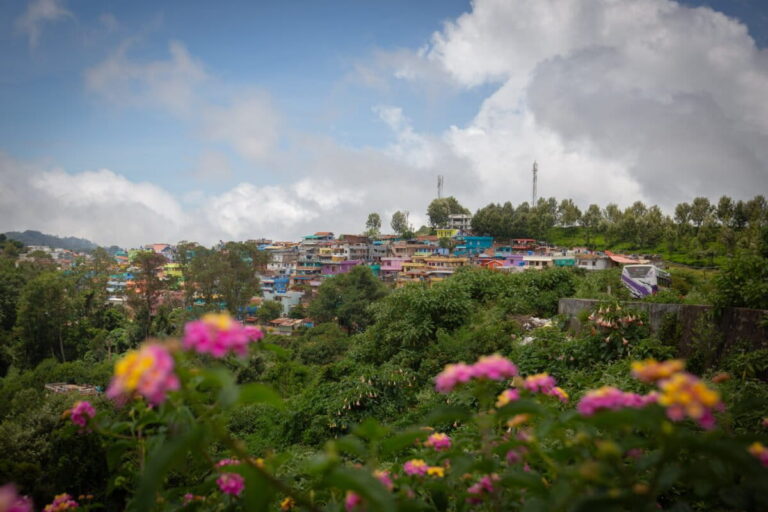- The new species of tree-spider crab was found near a patch of mangroves at the mouth of Chithari river in Kasargod district and is the first species from the genus Leptarma to be reported from India.
- The discovery highlights the need to document and conserve the remaining tracts of mangroves in northern Kerala, which support rich biodiversity. It is likely that more species unknown to science are lurking in the region and the researchers plan to explore the mangroves further.
- Mangrove crabs are ‘ecosystem engineers’ of mangrove ecosystems.
In a serendipitous discovery, researchers have described a tiny, cryptic species of tree-spider crab found climbing the mangrove trees of Kasargod district in the southern state of Kerala. Covered in dark purple patches, the shell of the crab is smaller than an adult thumbnail. The crustacean features long walking legs, large eyes and a unique structure of its male genital appendages.
Belonging to the newly-formed genus called Leptarma, the crab is named Leptarma biju after the head of the Department of Aquatic Biology and Fisheries at the University of Kerala, A. Biju Kumar, who has carried out extensive work on aquatic organisms including crustaceans in Kerala over the past three decades. He has to his credit 34 new species, which include fishes, crabs and helminths (worms). The crab is the first species of this genus to be reported from India.
“I used to concentrate on marine brachyuran crabs [true crabs] because in Kerala there are not much mangrove crabs as in northern parts of India,” said Suvarna S. Devi, assistant professor at the University of Kerala and lead author of the paper detailing the newly described species. But after this finding “we are very excited,” said Devi, adding that after the “COVID pandemic we are surely going to explore more, both marine as well as estuarine” environments.

Worth the wade
It was an early morning in January 2019 when Riyas A., a student from the university’s Department of Aquatic Biology and Fisheries went to Kasargod as part of his biodiversity collections on jellyfish blooms. He observed some curious crabs in the mangrove trees and on granite pillars of a bridge near the mouth of the Chithari River, one of the smallest rivers in Kerala that originates in the Western Ghats and empties into the Arabian Sea. As he knew Devi’s penchant for crabs, he managed to collect three of them.
“It was very difficult to reach that particular place of the bridge as the place is pretty close, say around 100 metres to a mangrove island,” said Devi. The crab was “spotted almost one metre above the water level” and with no boats available, “one has to wade through the muddy bottom to reach there.”
As soon as Devi got hold of the crab, curiosity got the better of her. She examined the crabs immediately and found that the “species had an elongated ambulatory leg and its propodus (the segment just before the claw-like tip of the leg called the dactylus) was much elongated,” said Devi. “I have not seen one with a long propodus from India so far.” Determined to identify the species of the crab, she approached a frequent collaborator Peter K.L. Ng, a professor from Singapore’s National University of Singapore.

Two months later when Ng arrived at the University of Kerala for collaborative research, they thoroughly examined the crabs. The researchers performed taxonomical studies on the species and compared its morphological features to a related crab found in Indonesia and Papua New Guinea and concluded that the species belongs to a newly-formed genus called Leptarma under the Parasesarma leptosoma species-complex.
The crab has a squarish, smooth carapace (shell) that is light yellow with dark purple patches. They noted that this species is distinguished by its long walking legs, the structure of its male genital appendages and its large eyes, which extend beyond the tip of its external orbital tooth. The location of the eyes may help it get a better view of its surroundings, suggests Devi, who has previously described several new crab species from the coasts of Kerala and Tamil Nadu.
Like other species in this group, the researchers are almost certain that the crustacean is a mangrove tree-climber because the crabs were spotted clinging onto granite pillars of a bridge located one metre above the sea level during the day at low tide. Most members of the Leptarma species have long legs. In this species, the long legs, especially its propodus are an adaptation to climb mangrove trees during high tide, explained the carcinologist (crustacean specialist).

Difficult to spot
This discovery is significant because it is the first time a member of the genus Leptarma has been recorded from India, said Jigneshkumar Trivedi, assistant professor of zoology at Hemchandracharya North Gujarat University, who was not involved in the discovery.
“The identification of mangrove-inhabiting crabs of the family Sesarmidae [land crabs] is very difficult,” Trivedi pointed out, because of their cryptic nature and camouflaged colouration. Collecting crabs is also challenging because “climbing crabs live inside crevices of mangrove tree branches,” Trivedi explained.
According to a list of marine bachyuran crabs prepared by his team in 2018, there are only 38 species of sesarmid (land-dwelling crabs) crabs reported from India. Crabs from the family Sesarmidae live on land, typically in marshes and mangroves.
“There are high chances of getting new species of crabs belonging to family Sesarmidae from Indian mangroves,” added Trivedi, who has described four new species of brachyuran crabs over the past decade.
The authors find it surprising that no species of Leptarma has been recorded from India until the present discovery of L. biju, but they believe that this is probably due to the fact that these crabs only come out at night.

Ecosystem engineers of mangrove forests
Trivedi and Devi both note that mangrove crabs are referred to as ‘ecosystem engineers’ of mangrove ecosystems. Burrows built by crabs in the ground increase aeration in the sediments which promotes the growth of mangroves, said Trivedi. Crabs also selectively consume propagules of mangroves and thereby influence the structure of mangrove vegetation, Devi pointed out.
Studies have shown the ecological significance of mangrove crabs such as their role in organic matter recycling. By feeding on leaf litter and releasing nitrogenous waste, crabs provide nutrients to mangrove plants. “It is said that the diversity and abundance of mangrove crabs is considered as an indicator of mangrove ecosystem health,” Trivedi stressed.
Mangrove ecosystems are vulnerable in Kerala’s coast and this discovery highlights the need to document and conserve the remaining tracts of healthy mangrove forests in northern Kerala such as in the districts of Kannur and Kasargod, including those in the Chithari river mouth and the river mouths of smaller rivers in the state, stressed Devi. They are poorly studied for their rich biodiversity and as a result, she suspects that this species may have been lurking around for a long time. “Since they are nocturnal [active at night] and their habitats are not easily accessible, they remained unnoticed for long,” added Devi.
CITATION:
Ng, P. K., & Devi, S. S. (2020). A new tree-spider crab of the genus Leptarma (Brachyura, Sesarmidae) from mangroves in Kerala, India. Crustaceana, 93(7), 759-768.







